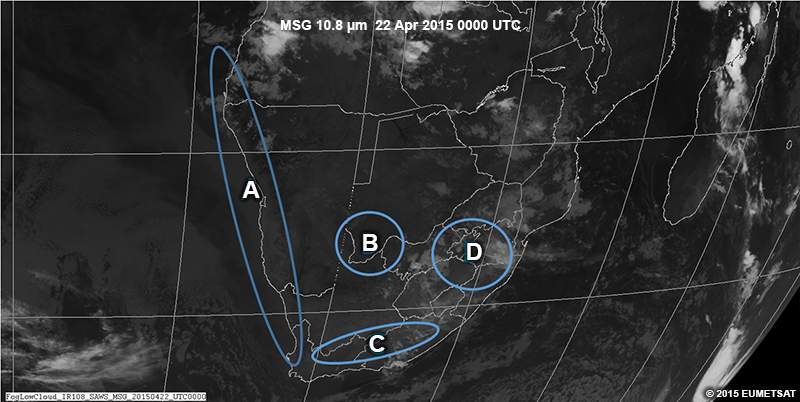Susceptibility to Fog
Question

Which areas on the image tend to be most susceptible to fog? Select all that apply.
The correct answers are A, C, and D.
Area A is susceptible to fog, mostly advection fog. The cold Benguela current runs south-to-north very close to the coast line in this region. As the Atlantic high pressure shifts position and south-westerly winds blow over the cold current towards the west coast of South Africa, Namibia, and Angola, the airmass cools down and the moisture condenses to form fog. This fog is then blown onto the coast and adjacent interior regions.
Area B is not generally a good area for fog formation. There is very little moisture available for condensation, even with potentially low overnight temperatures during winter.
Area C is susceptible to radiation fog, particularly after cool, moist air has been advected into the area. As the air cools down overnight, radiation fog forms during the early hours of the morning in low-wind conditions.
Area D is the highveld region of South Africa. Radiation fog forms on cool autumn and winter mornings after moisture has been advected into the region by the passage of a cold front. When there’s a cut-off low or ridging high pressure system, the winds are generally light in the evenings and temperatures fall quite steeply due to the slightly raised elevation of the ground.
These four areas are not the only ones susceptible to fog in southern Africa. Countries such as Zimbabwe, Mozambique, Swaziland, and Zambia all get radiation fog and even up-slope and advection fog at times. The types of fog that form depend on the underlying land conditions, such as altitude and topography, and the local wind regime.